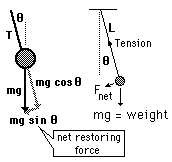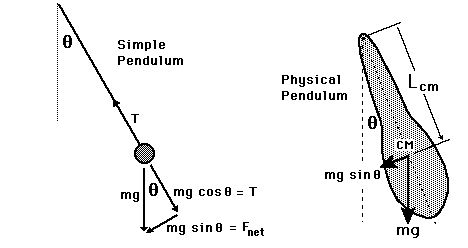Simple Pendulum
A simple pendulum is one which can be considered to be a point mass suspended from a string or rod of negligible mass. It is a resonant system with a single resonant frequency. For small amplitudes, the period of such a pendulum can be approximated by:
(Enter data for two of the variables and then click on the active text for the third variable to calculate it.) This expression for period is reasonably accurate for angles of a few degrees, but the treatment of the large amplitude pendulum is much more complex. |  |
If the rod is not of negligible mass, then it must be treated as a physical pendulum. |
Periodic motion concepts
| HyperPhysics***** Mechanics | R Nave |








 , we can use the approximation
, we can use the approximation








